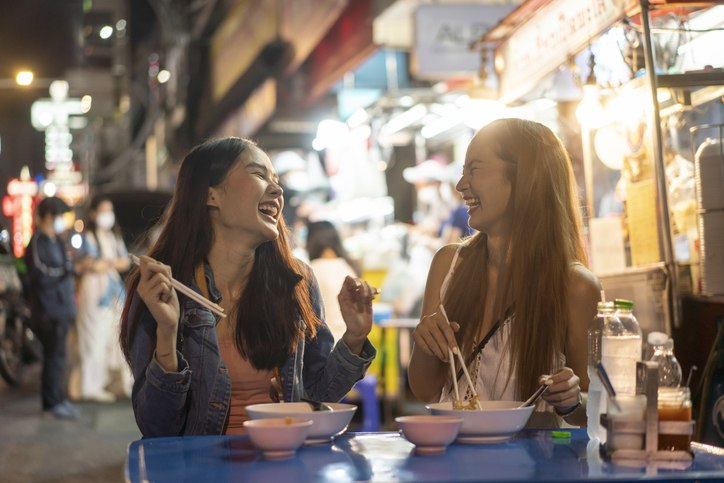Reading time: 5 minutes

Spend a few days in this happening city and you'll wonder why you didn't do it sooner. The question should not be whether to go to Singapore, but when!
Dismissing this Southeast Asian island nation as a mere stopover is to do yourself a grave disservice. Singapore is an exciting holiday destination in its own right, not least because of the melting pot of cultures living in 10 distinct districts. All are worth exploring, but if you must narrow it down be sure to include these five neighbourhoods on your itinerary: Little India, Clarke Quay, Chinatown, Marina Bay and Sentosa.
Little India
Little India is a vibrant area with an array of fabulous food stalls, markets and historic shophouses. Make your way around the streets and alleyways on foot, and don't miss Singapore's oldest Hindu place of worship, Sri Mariamman Temple.
Clarke Quay
Located on the Singapore River, Clarke Quay is where it's at when it comes to nightlife. The area's pubs, clubs, restaurants and bars are as much a drawcard for locals as they are for travellers wanting to party the night away.
It's easy zipping around to Singapore's other attractions from here; the MRT rail system is fast and efficient. Be sure to visit the National Gallery Singapore, a mere minutes away by MRT. Entry is free, it's open daily (10am-7pm), and it's the biggest Southeast Asian art museum in the world.
Chinatown
Did we mention Singapore was a melting pot? And that the variety of food is positively mouthwatering as a result? This is especially true in Chinatown, where old meets new, cultures collide, and affordably priced streetfood is just about everywhere you look. Accommodation is more backpacker than luxury, but its street stalls, night market and happening vibe makes a wander around this area a must no matter where you're staying.
Marina Bay
At the other end of the spectrum is Marina Bay, where high-end hotels, designer fashion and world-class restaurants await. The iconic Marina Bay Sands hotel offers stunning views from its Skypark Observation Deck, 57 storeys up. Take a dip in the world's largest rooftop infinity pool while you're there - the experience is unforgettable.
Can't get enough of lofty vistas? The Supertree Observatory at Gardens by the Bay offers another way to take in the views, along with an immersive journey through flower domes, cloud forests and serene gardens.
Sentosa
If you think you've seen all Singapore has to offer but you haven't been to Sentosa, you might want to extend your trip. This family-friendly island is within walking distance of the mainland, but getting there by cable car is much more fun - and fun is what Sentosa is all about. When you've worn yourself out at Universal Studios, S.E.A Aquarium and Adventure Cove Waterpark, kick off your shoes and recuperate at one of Sentosa's white, sandy beaches; that's precisely what they were made for.
When to visit Singapore (and other things worth knowing)
The best time to visit Singapore is between December and June, when sunny days abound and humidity levels and rainfall are low.
Before you head off, it pays to know the rules
Singapore is a clean and tidy city where good manners are prized, so if you're planning to chew gum, litter, spit, urinate in the street or 'expel mucus from the nose' (gross, right?), you may want to think twice about visiting. Even first-time offenders caught doing the wrong thing face fines of hundreds of dollars.
Wondering about how much a trip to Singapore is going to set you back even without a fine? The exchange rate is a blessing for the mathematically challenged; one Australian dollar equals roughly one Singapore dollar, or 'sing' if you want to sound like a local.
Travel Insurance for Singapore
Travel Insurance Direct can cover you for various things you may encounter on your trip to Singapore. But what does that mean? Have a look at exactly what we cover and what we don't to check if the policy offers protection for the things you feel are important, but some specific things we offer cover for are:
- Some Coronavirus related events
- Overseas medical expenses (including Coronavirus)
- Luggage and personal effects
- Cancellation
This is a brief summary of cover only and does not include the full terms, conditions, limitations and exclusions. Read the PDS before purchasing.